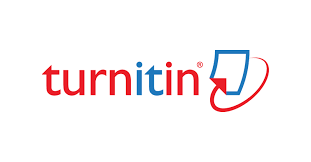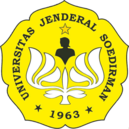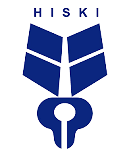Application of Peer Teaching in Training Students to Teach Japanese (Mogi Jugyou) in Microteaching Courses
Abstract
This study aims to describe students' use of the peer teaching method in carrying out Japanese teaching practice (mogi jugyou) in microteaching courses. The peer teaching-learning method is a cooperative learning strategy for mutual respect, mutual understanding of the role given, having active and cooperative tendencies, and provides an assessment or evaluation after the teaching process is complete. This study aims to apply peer teaching in Japanese teaching practice (mogi jugyou) for third-year Japanese language education students in microteaching courses. The research method used was quasi-experimental research carried out on 3rd-degree (6th Semester) students with a total of 32 people. The initial stage is to plan teaching practice activities (mogi jugyou), implementation, and process observation of Japanese language teaching activities (mogi jugyou) in class and from teaching videos. The results of the study conclude that peer teaching is expected to make it easier for students to practice teaching Japanese in front of their classmates. Students were able to participate actively and are able to solve problems together using Japanese language teaching practice (mogi jugyou) during lectures. With peer teaching, students are able to practice teaching effectively, and the objectives and goals of the Japanese language learning materials provided can be achieved. It was also concluded that students have higher confidence when teaching students at schools, especially during PLSP.
References
Asril, Z. (2017). Microteaching disertai dengan Pedoman Pengalaman Lapangan, Jakarta: PT. In Raja Grafindo Persada.
Azrai, E. P., Rini, D. S., & Suryanda, A. (2020). Micro-teaching in the Digital Industrial Era 4.0: Necessary or not? Universal Journal of Educational Research, 8(4A), 23–30. https://doi.org/10.13189/ujer.2020.081804.
Burgess A, Mcgregor D, Mellis C. (2014). Medical students as peer tutors : a systematic review. BMC Med Educ. 14(1).1–8.
Djalil, A. dkk. (1997). Pembelajaran Kelas Rangkap. Jakarta: Depdikbud. Tutor Teman Sebaya.
Febianti, Y. N. (2014). Peer teaching (Tutor Sebaya) Sebagai Metode Pembelajaran Untuk Melatih Siswa Mengajar. Jurnal Edunomik, 2(2). 80-87.
Hamalik, O.(1990). Psikologi Belajar dan Mengajar. Bandung; Sinar Baru. Algensindo.
Haris, I. N. (2018). Model Pembelajaran Peer Teaching Dalam Pembelajaran Pendidikan Jasmani. Jurnal BIOMARTIKA, 4(1).
Hertiavi, M. A., & Kesaulya, N. (2020). Peer Teaching sebagai Upaya Meningkatkan Hasil Belajar Mahasiswa Program Sarjana Pendidikan Fisika. PSEJ (Pancasakti Science Education Journal), 5(1), 28-34. https://doi.org/10.24905/psej.v5i1.17.
Hikmawati, Sahidu, H., & Kosim. (2020). Tugas Berbasis Proyek untuk Melatih Keterampilan Mengajar Mahasiswa Calon Guru Saat Pandemi Covid-19. Indonesian Journal of Teacher Education, 1(2), 103–110. https://journal.publication-center.com/index.php/ijte/article/view/151.
Ledger, S., & Fischetti, J. (2020). Micro-teaching 2.0: Technology as the classroom. Australasian Journal of Educational Technology. https://doi.org/10.14742/ajet.4561.
Nurwahidah, I. (2020). Kemampuan Keterampilan Dasar Mengajar Mahasiswa Calon Guru IPA Program Studi Pendidikan IPA. EduTeach : Jurnal Edukasi Dan Teknologi Pembelajaran, 1(2), 22–33. https://doi.org/10.37859/eduteach.v1i2.1957.
Rachmadyanti, P. (2021). Persepsi Mahasiswa PGSD tentang Penggunaan Padlet pada Pembelajaran Microteaching. Jurnal Penelitian Dan PengembanganSekolahDasar,9(2). https://doi.org/10.22219/jp2sd.v9i2.17105.
Remesh. (2013) Microteaching, an efficient technique for learning effective teaching. Journal of Research in Medical Sciences. 158-163.
Sufiati, V., & Afifah, S. N. (2019). Peran perencanaan pembelajaran untuk performance mengajar guru pendidikan anak usia dini. Jurnal Pendidikan Anak, 8(1), 48–53. https://doi.org/10.21831/jpa.v8i1.26609.
Suherman, E. (2003). Strategi Pembelajaran Matematika Kontemporer. Bandung: PT Remaja Rosdakarya.
Sukirman, D. (2012). Microteaching. Jakarta: Kemenag.
Supriatana, A. (2021). Paduan Perkuliahan Microteaching Universitas Pendidikan Indonesia. Bandung: UPI.
Tika, I. N., & Maryam, S. (2021). Pembelajaran Microteaching Selama Massa Covid-19 Berbasiskan tugas Proyek bagi Mahasiswa Pendidikan Kimia. Jurnal Pendidikan Kimia Indonesia.Vol.5,No.2,Tahun,pp.85-93. https://ejournal.undiksha.ac.id/index.php/JPK/article/view/38465/20972.

This work is licensed under a Creative Commons Attribution-ShareAlike 4.0 International License.
Authors who publish with Jurnal Ilmiah Lingua Idea agree to the following terms:
- Authors retain copyright and grant the journal right of first publication with the work simultaneously licensed under a Creative Commons Attribution License (CC BY-SA 4.0) that allows others to share the work with an acknowledgment of the work's authorship and initial publication in this journal.
- Authors are able to enter into separate, additional contractual arrangements for the non-exclusive distribution of the journal's published version of the work (e.g., post it to an institutional repository or publish it in a book), with an acknowledgment of its initial publication in this journal.
- Authors are permitted and encouraged to post their work online (e.g., in institutional repositories or on their website) prior to and during the submission process, as it can lead to productive exchanges, as well as earlier and greater citation of published work.





















.png)




_.png)


